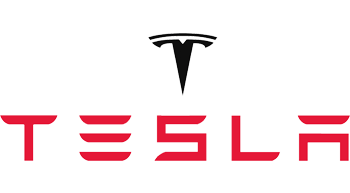
Last month, we featured six innovation attributes that mid-size, high-growth companies hold in common. This month, it’s six company behaviors that hamper growth and innovation, even as leaders ostensibly pursue it.
Resistance to disruptive innovation can also crop up when external stakeholders work to defend the status quo in an industry, and we’ll look at one company that’s earning that kind of opposition now.
The CEO says growth and innovation are top priorities, but…
It’s a common story – innovation and growth top the CEO’s priority list, and yet most new business ventures that existing companies launch will fail. Moreover, statistics show that most companies around today will not be seen in a couple of decades. A recent issue of Harvard Business Review explores six common mistakes that kill growth initiatives. They occur when CEOs and other top business leaders…
- Don’t take active, personal responsibility for growth by providing hands-on oversight of new initiatives (including spending significant time with the teams that work on them).
- Don’t put experienced talent at the helm of risky new ventures, but entrust them to recent MBA grads or staff executives who’ve never actually run an enterprise.
- Don’t ensure that a team with the right capabilities is assigned, and fall back instead on people who are « available. »
- Don’t assess performance with metrics that are right for start-ups.
- Don’t apply funding and governance policies that make sense for start-ups.
- Don’t leverage the company’s core capabilities in support of fledgling initiatives.
A composite sketch of the ideal growth leader could certainly be drawn using the opposite behaviors as a guide. This enlightened leader would dedicate a significant chunk of his or her time to growth initiatives; give them the best shot at success by assigning experienced people in the organization to lead them; understand how budgeting and progress measurement must be tailored for them rather than for mature organizations; and pull the rest of the organization into supporting the growth challenge while maintaining the strengths of the core business.
It’s a vision worth striving for, yet not one that is attainable (or perhaps even right) for every organization. We’re all at different places in our company and industry life cycles. And in any case, while organizational cultures can change when top leaders get involved, many innovators do need to work under the radar on projects that could be perceived as threatening to the rest of the organization.
Still, all management levels can learn from these six common mistakes. Oftentimes the counter-productive behaviors are not deliberate. They can easily occur when managers focus on short-term performance and pressures versus long-term results and achievement. They can also signal a knowledge gap; getting a new venture going differs from running a mature enterprise. Use them as a way to take stock of your own behaviors. Do you give growth and innovation plans the best shot in your own parts of the business?
The status quo weighs heavily against a direct-to-consumer sales model
When a company presents a new business model that threatens those vested in a current industry norm, expect heels digging in to resist the upstart. We’re certainly seeing that in the case of Tesla.

The company is set on using a direct-to-consumer sales model to sell its all-electric vehicles, including the Model S, Motor Trend’s 2013 Car of the Year. Tesla’s VP of Sales and Ownership Experience, George Blankenship, explains in an interview with AutoTrader.com:
« Traditionally a car company designs, engineers and builds a car they think the public will want. But even though that company has invested all this energy in the process, when they hand it off to the dealer the customer experience is out of their hands-and the dealer’s motivations are driven by the desire to sell as many cars as possible every day, which doesn’t lend itself to a happy customer. »
Tesla wants to own the entire process, from raw material through customer delivery. So it operates its own showrooms, mostly in malls where it can interact with, educate, and learn from a broad range of prospective customers (including those who are not actively shopping for a car). Ultimately, it aims to sell cars online at sticker price. Does that threaten the current auto dealer business model? You bet.
Tesla hasn’t sold all that many cars yet. But it is poised for growth as it garners more accolades and attention and ramps up production to roll off a target of 20,000 vehicles this year from its Fremont, California plant. Efforts to block the company from using its sales approach, including attempts to legislate against its business model, have been ongoing in a slew of states including Texas, New York, and North Carolina. As Bob Glaser, president of the North Carolina Automobile Dealers Association put it,
The moral of the stories
If you are in a leadership position, carefully consider how you personally invest in growth and innovation. Gauge your own knowledge gap on how to support and manage new ventures versus established organizations. And check to see how your own time and expertise and that of your staff can be better geared toward growth.
Recognize the force that the status quo can exert to try to stop the flow of change. There are often logical reasons that underlie that resistance. Expect deliberate attempts to halt a disruptive innovation. You must be prepared to fight those battles, whether they are internal or external. And consumers that will benefit can be enlisted to help you resist the resistors.

